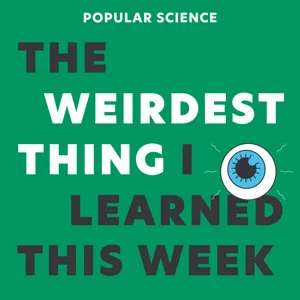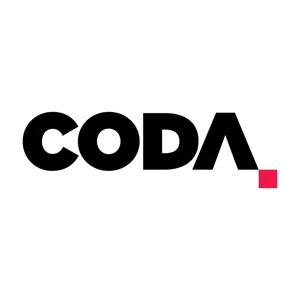Podcast Summary
Revolutionizing industries with tech: agriculture, home services: Bayer uses AI, CRISPR for food production without fertilizers. Angie simplifies home services with skilled pros. Unexpected discoveries from science and tech at Popular Science.
Technology is revolutionizing various industries, from agriculture to home services, to make our lives more efficient and productive. In the agriculture sector, companies like Bayer are using artificial intelligence and CRISPR technology to increase food production without the use of fertilizers. Meanwhile, home services have been simplified with the help of platforms like Angie, which connect homeowners with skilled professionals to manage home projects from start to finish. At Popular Science, the editors share their discoveries from the world of science and tech, including unusual facts like the existence of a lighthouse that was stranded by a volcanic eruption and the history of smoke enemas in resuscitation. These examples showcase how technology and innovation continue to shape our world in unexpected ways. Listen to the Tools and Weapons podcast with Brad Smith and Bill Anderson, or check out the Angie app to experience these advancements firsthand.
Tobacco Smoke Enemas for Drowning Victims in the 1700s: During the 1700s, tobacco smoke enemas were used in an attempt to revive drowning victims, challenging societal stigmas and leading to the formation of societies promoting life-saving methods and eventually modern CPR.
During the 1700s in Europe, tobacco was widely used in various forms of medicine due to its worming effect and absorption of moisture. One unusual practice was the use of tobacco smoke enemas as part of an effort to resuscitate drowning victims. This was a time when doctors were still practicing ancient methods like bleeding and balancing humors, and the idea of attempting to revive someone who appeared to have drowned was not common due to societal stigmas and potential legal liabilities. The London Society for the Recovery of Persons Apparently Drowned was formed to challenge this mindset and promote efforts to save lives, leading to the development of methods like the barrel method and eventually modern CPR. Despite the controversy and potential risks, there are reported cases of the smoke enema method working, and improvised kits were even left around waterways for emergency use.
Resuscitation with Tobacco Smoke Enema in the 17th and 18th Centuries: During the 17th and 18th centuries, tobacco smoke enema was a common practice for resuscitation due to its warming and stimulating properties, despite concerns about disease transmission and later proven harm to the cardiovascular system. The earliest known detailed account of a resuscitation attempt dates back to 1650.
During the 17th and 18th centuries, tobacco smoke enema was believed to be an effective method for resuscitation due to its warming and stimulating properties. This belief originated from anecdotal evidence and was used despite concerns about the transmission of diseases like cholera. The practice fell out of favor when scientific evidence proved that nicotine was harmful to the cardiovascular system. An intriguing historical fact is the earliest known detailed account of an attempt to resuscitate someone dates back to 1650, involving a woman named Anne Green who was hanged for infanticide. Her friends tried various methods to save her from suffocation during the execution. Despite the risks and limited understanding of the human body, tobacco smoke enema was a common practice during this era, highlighting the importance of anecdotal evidence and the evolving nature of medical knowledge.
From miraculous revivals to luxury mascara caps, the lengths people go to innovate: Determination to understand the human body and create luxury images drives extreme innovation
The lengths people have gone to in the name of scientific discovery and medical advancement, as well as consumer marketing, can be quite surprising and even extreme. Anne Greene's miraculous revival after being hanged and sent for dissection serves as a testament to the determination of physicians to understand the human body, while Clinique's meticulous testing of their mascara cap design demonstrates the depths of companies' efforts to create a luxury image. Both stories illustrate the human drive to innovate and improve, even in the most unexpected ways. Additionally, the discussion highlights the power of sound in shaping perceptions and experiences, whether it's the rattle of a revived patient or the satisfying click of a luxury mascara cap.
Companies invest in unique sensory experiences: Companies focus on sensory details like sounds to enhance brand recognition and consumer trust. For instance, Snapple's pop sound, Sharpie's 'Scritch Scratch', GE's appliance tunes, Tampax's quieter wrapper, and Nike's quieter golf clubs.
Companies pay close attention to the sensory experiences their products provide, even if it's something as seemingly insignificant as the sound they make. For instance, Snapple eliminated plastic wrapping because the pop sound of opening the bottle assures consumers of freshness. Sharpie ensures its markers have a distinct "Scritch Scratch" sound for brand recognition. GE designs appliances with varying tunes based on their price point. Tampax created a quieter wrapper for their Pro line to reduce noise in bathrooms. Golf clubs are tuned to avoid unpleasant sounds, like Nike Sumo's loud "ping." These examples show how companies invest in research and development to create unique sensory experiences that resonate with consumers.
The power of sound in shaping our perceptions and experiences: Sound, whether in physical products or intangible experiences, can significantly impact our perception of quality and value through its ability to appeal to our senses and create desirable experiences. Low pitched sounds evoke feelings of heaviness and luxury, while high pitched noises can be annoying and unpleasant.
The sound of a product, no matter how trivial it may seem, can significantly impact our perception of its quality and value. From the click of a lighter's cap to the thwack of a golf driver, these sounds are carefully designed to appeal to our senses and create a desirable experience. Low pitched sounds, for instance, are often associated with heaviness and solidity, making them seem more luxurious. Conversely, high pitched noises, like those made by mosquitoes, can be annoying and unpleasant. This phenomenon is not limited to physical products; even intangible experiences, such as horror movie sound design, can leave a lasting impression through the use of sound. For instance, the use of low frequency sounds in horror movies can create a sense of unease and discomfort, while high frequency sounds can startle and alarm the audience. Overall, the power of sound in shaping our perceptions and experiences is an intriguing and often overlooked aspect of design and marketing.
The Capelinhos volcano eruption in 1957 caused a significant social change and lasting connection between the Azores and the United States: The destructive Capelinhos volcano eruption in 1957 led to a social change, with thousands seeking refuge in the US, creating a lasting connection and American slang reflecting this history. The volcano's ash emissions lasted 13 months, leaving a barren landscape uninhabited today.
The destructive Capelinhos volcano eruption in the Azores in 1957 led to a significant social change as thousands of people from the affected whaling village sought refuge in the United States. Two senators, John Pastore from Rhode Island and John F. Kennedy from Massachusetts, sponsored a bill to bring them back. This event created a lasting connection between the region and the United States, with American slang still reflecting this history. The volcano's explosive ash emissions lasted for 13 months, creating a fragile, barren landscape that remains uninhabited today. Despite its destructive power, the Capelinhos eruption is now known as a Surtseyan eruption, as another massive eruption in Iceland five years later took that name instead. The volcano's fragile rock formations are a reminder of nature's power and the resilience of those affected by its forces.
Living Near Volcanic Islands: Embracing Unique Natural Phenomena: People have built homes near lava caves and pastures on Faial and Pico islands in Portugal, and discovered hidden lava caves beneath Auckland, New Zealand, despite safety concerns, showcasing human fascination with these natural wonders
People have learned to live with the unusual natural phenomena that come with living near volcanic islands. For instance, on Faial and Pico islands in Portugal, people have built their homes next to lava caves and pastures, even though these caves were formed by repeated volcanic eruptions. The lava caves are humid due to the porous volcanic rock, and the lava tubes form when the lava cools and solidifies on the surface while still flowing beneath. These caves are filled with unique formations like stalactites. In Auckland, New Zealand, which is also built on volcanic land, there are lava caves hidden beneath the city, some of which have manhole covers for access. However, these caves are not open to the public due to safety concerns. Despite this, the fascination with these natural wonders remains, and many people are drawn to explore them, often discovering hidden entrances in their own backyards.
Discovering Hidden Caves in Auckland, New Zealand: Exploring Auckland's hidden caves reveals natural wonders, raises intriguing questions, and offers unique experiences despite potential dangers and mysteries.
There's a fascinating world of hidden caves beneath the surface of Auckland, New Zealand, and efforts are being made to map and explore them. These caves, some of which are located in unexpected places like under houses or next to basements, are a testament to the natural wonders that lie beneath our feet. The existence of these caves raises intriguing questions about what lies beneath the ground and the dangers and mysteries that come with exploring them. Moreover, there are stories of animals, like sheep, getting lost in these caves and surviving for years, adding to the intrigue and wonder of these hidden spaces. One such sheep, which was lost for three years, returned with an incredible amount of wool, leading to a significant event to shear it for the first time. The exploration and mapping of these caves are crucial for understanding the natural world and the hidden treasures it holds. Despite the potential dangers and mysteries, the curiosity and fascination that comes with discovering these hidden gems make it all worth it. So, the next time you're in Auckland, New Zealand, consider taking a tour of the lava caves and experiencing the wonder and intrigue that lies beneath the surface.
Angie's List: Connecting Homeowners with Skilled Professionals: Angie's List simplifies home projects by connecting users with local pros, allowing for easy comparison of quotes, and streamlining the process from start to finish. Meanwhile, PaintCare promotes sustainable painting practices by encouraging buying only what's needed, using up existing paint, and recycling leftovers at convenient drop-off sites.
Angie's list simplifies the process of finding skilled professionals for home projects. With over 20 years of home service experience, Angie's list provides a platform to connect with local pros and get quality work done. Whether it's a small repair or a big project, Angie's list streamlines the process from start to finish. The Angie app or website allows users to input their project details, answer a few questions, and Angie takes care of the rest. Additionally, Angie's list helps users compare quotes from multiple pros and connect instantly. Another takeaway is the importance of reducing paint waste. PaintCare, a program focused on paint care, emphasizes the significance of buying only what you need, using up what you already have, and recycling the rest. By following these three simple rules, we can reduce waste and make painting projects more sustainable. PaintCare provides convenient drop-off sites at local paint stores to make recycling leftover paint easy. Overall, Angie's list and PaintCare offer valuable solutions for simplifying home projects and reducing waste. Angie's list connects users with skilled professionals, while PaintCare encourages responsible painting practices and waste reduction.




